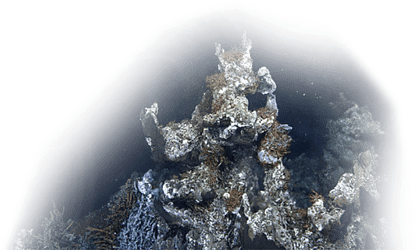Ocean Networks Canada (ONC) has successfully completed its first wave glider geodesy mission off the west coast of Vancouver Island following its completion of nearly two months of monitoring tectonic movement along the Juan de Fuca and North American plates.
The University of Victoria-owned marine research vessel, John Strickland, successfully recovers ONC’s wave glider at Imperial Eagle Channel in Bamfield on August 19, 2022.
The Liquid Robotics wave glider is a GPS-equipped autonomous floating platform that collects oceanographic data and is part of ONC’s pioneering seafloor geodesy monitoring system, the largest in North America. Located at the Northern Cascadia subduction zone, the seafloor geodesy system includes 21 acoustic transponders from Sonardyne at key seafloor sites across the northern Juan de Fuca plate and on the North American plate. Powered either by battery or via connection to ONC’s NEPTUNE cabled observatory, these transponders serve as permanent markers on the seafloor that track plate motion near the subduction fault.
Because GPS cannot function through water, a vehicle is required at the surface to communicate with the Sonardyne transponders located on the seafloor. That’s where the wave glider comes into play.
ONC staff scientist, Martin Heesemann, explains that the Juan de Fuca plate is subducting under the North American plate. The boundary between the plates is a large fault that may be either locked or moving very slowly, a process called slow slip. In some areas of the world, slow slip was a precursor to large subduction earthquakes. Thus, understanding the state of our offshore plates’ motions informs tectonic risk in our region, says Heesemann.
Between deployment on June 28 and recovery on August 19, the wave glider was gathering acoustic data from the transponders. Heesemann and other ONC staff control and monitor the wave glider from shore using computer software, moving it to locations above the transponders for days at a time. At each location, the glider sends an acoustic trigger signal to the transponder to activate it. The transponder data are then combined with the glider’s GPS to precisely calculate its seafloor positions.
Missions like this will take place each year to precisely measure the tectonic plate motion and assess its movement from previous years. With this new knowledge, scientists can advance our understanding of subduction earthquakes, which are the most destructive on Earth.
The wave glider is designed with wing-like protrusions that extend eight metres below the surface and that harvest wave energy for propulsion. Solar panels atop the instrument also harvest the sun’s energy to provide power for data collection.
Staff scientist Jesse Hutchinson says, “It may take a few years of missions to deliver a complete picture given the great water depths that affect measurement accuracy and the rate of motion of the Juan de Fuca plate, which we believe is roughly ~4 cm/yr.”
ONC field services manager Dirk Brussow and senior project engineer Nicolai Bailly with the recovered wave glider from the seafloor geodesy system project.
Infrastructure installation for the seafloor geodesy project started in 2019. Prior to this full scale offshore operation just completed, the wave glider underwent shakedown testing to become mission ready. The project vision is to deliver transformational advances in marine geodesy utilizing real-time data for monitoring the horizontal and vertical change in plate motion and slow tectonic deformation. The overarching goal is to use this knowledge to create alerts and warnings to diminish the devastation of these catastrophic events.
Funding for the wave glider geodesy project comes from the Canada Foundation for Innovation Fund, and the Province’s BC Knowledge and Development Fund.
